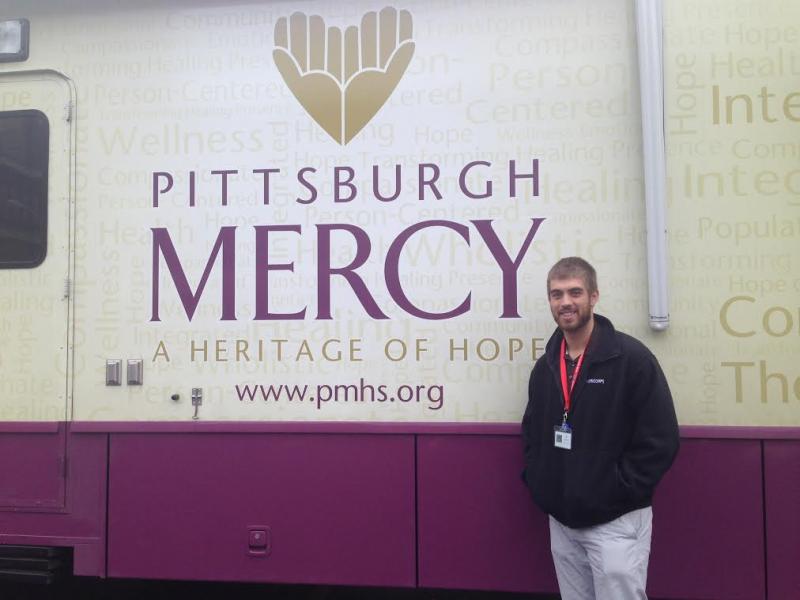Lessons Learned: Two Sides to Every Story
Getting things done for America! This AmeriCorps mantra resonates with me each day as I walk into my host site at Pittsburgh Mercy Family Health Center (PMFHC). If I had a nickel for each time I’ve been asked, “So…what exactly do you do?” I would have more money than I earn in a year as an AmeriCorps member. Being an AmeriCorps member is about much more than the dollar sign on a paycheck. It’s about making a connection with the community served and being able to leave a mark on that community in just eleven short months.
I have officially been at my host site for three weeks and have already connected with several people on a level I previously expected would take all year to establish. It is fair to say I’ve learned a lot already. I never expected my patient population to be so open about their struggles or so willing to connect with the resources available to them. I came into this position expecting resistance from patients. Instead, I have seen patients seek out help, ask for additional assistance and advice, and most importantly, show extreme gratitude for the services offered at PMFHC.
Growing up here, I viewed the homeless population around Pittsburgh as an isolated group that avoided the rest of the world as much as the rest of the world avoided them. However, the longer I spend at my host site, the more I begin to understand just how true and false that statement can be simultaneously. Last week, an individual who was homeless came into the clinic looking for pain medications; he had been hit by a car and was released to the streets by an emergency department with a fractured hip and chipped femur. He noticed that the ER staff was treating him with lower standards and expectations than other patients. Part of me attributes this to his pain level and possibly impatience too, while another part of me understands the reason why he could be looked at or treated differently. It is common for homeless individuals to seek treatment at ERs in lieu of seeing a primary care physician due to both greater accessibility of hospitals and number of operation hours. However, for this patient, it was different. After being discharged at his request against medical advice, he came into the clinic looking for someone, anyone, who cared enough about him to listen to his concerns. My mentor and I spent over six hours with him, trying to get him to go back to any hospital and seek medical care. He continued to refuse and eventually walked back into the street, in the pouring rain, on his fractured hip and chipped femur. Watching him leave made me feel like I got punched in the gut; we spent the entire day attempting to earn trust from this man, and I felt like I had accomplished nothing. However, we soon learned that later that same night, Operation Safety Net was able to connect with him and earn enough trust that he returned to the hospital with one of their staff. He was scheduled for near-immediate surgery due to the severity of his injuries.

In this single case, I experienced both sides of the previous statement regarding the homeless population. I watched hospital staff treating someone different because of homelessness, and I also saw an entire staff of people dedicated to caring for vulnerable populations to ensure they receive proper care. In the end, it does not matter who got him to the hospital, just that he ended up there. Over three short weeks, my perceptions of people have already changed along with my general awareness of patient populations and the healthcare system, which has increased substantially. As I look forward to the remaining ten months of service, I hope I continue to learn as much from my patients as I have in the first three weeks.